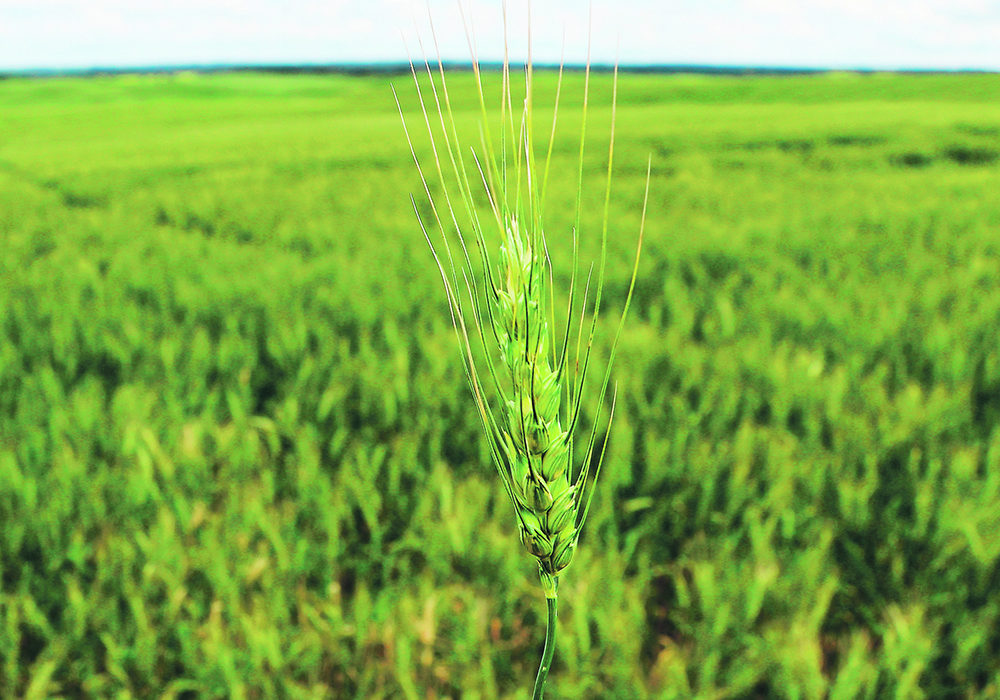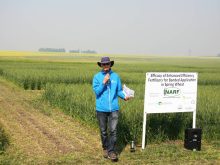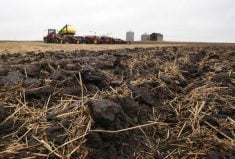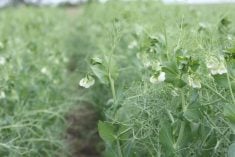Climate change’s higher carbon dioxide levels expected to increase yields, but higher temperatures will negate the positive effects
There is a flaw in a common coffee-row discussion point, that global warming will be good for Canadian agriculture because warmer temperatures and more carbon in the atmosphere will help farmers grow bigger crops.
This is because even though elevated CO2 in the atmosphere will increase photosynthesis in crops, warmer temperatures will negate any positive effect.
Danielle Way, a Canadian scientist employed at the Australian National University, focuses on how climate change affects plant performance, including increased warming, rising CO2 levels and more water stress in crops and forests.
Read Also

Fendt takes a combine on the road in the U.S.
Putting an Ideal combine in fields across different regions has given the brand a chance to prove that the combine is capable of performing well in a variety of conditions.
She presented some of her work at Canola Week in Saskatoon Dec. 7, where she said global temperatures are already up about 1.2 C because of increased CO2 concentrations in the atmosphere from greenhouse gas emissions and land use change.
The Intergovernmental Panel on Climate Change predicts warming of around 4 C globally within 80 years if greenhouse gas emissions are not reduced.
“Places in the Northern Hemisphere, especially at high latitude, regions like Canada, are expected to see much greater warming than the average,” Way said.
“On the Canadian Prairies you’re looking at average warming of five to seven degrees Celsius. That’s a really big effect on the crops that we’re growing.”
The results of free-air carbon dioxide enrichment (FACE) experiments have led people to expect some increase in photosynthesis and some boost in crop yield in an environment that is warmer with more carbon in the atmosphere
“What we’ve learned from these types of experiments, where you have natural soils and natural weather, is that high CO2 increases photosynthesis in the field,” Way said.
“As you have more CO2 around the enzyme (Ribulose-1,5-bisphosphate carboxylase oxygenase), you stimulate its uptake of CO2 and photosynthesis and simultaneously you suppress a separate process known as photorespiration, and that’s where the same enzyme fixes oxygen instead of CO2.”
She said photorespiration is generally considered a wasteful reaction from the plant’s perspective because it wastes carbon and it wastes energy that the plant has already taken up.
If these studies are taken at face value, they suggest a wide range of yield increase, including a 20 percent yield increase in C3 plants such as canola directly related to more C02 available to plants.
However, photosynthesis is not just CO2 dependent; it’s also temperature dependent.
Way said photosynthesis is suppressed at low temperatures, and as a plant warms up a thermal optimum is reached because warming increases enzyme efficiency inside the leaf.
She said above temperatures of 25 to 30 C, declines in photosynthesis are observed.
“If we’re operating below the thermal optimum of a plant, then a little bit of warming will actually increase photosynthesis. But if you’re already up in a plant that’s heat stressed and is above those sorts of temperatures, which is what we’re going to move to under climate change, then instead what you’re going to get is suppressions of carbon uptake and therefore suppressions of growth and yield,” Way said.
She said plants also acclimate and adjust to their environment over time, and that initial stimulation of photosynthesis tends to gradually be suppressed and wear off under long-term exposure to high CO2.
“If we take a plant and we move it to high CO2, you might see a boost of say 40 percent in photosynthetic rate. But if you leave it there in something like a FACE experiment, gradually over time that boost in photosynthesis is reduced. Instead, you’re at more like that 20 percent increase in photosynthesis.”
Similarly, plants can adapt to temperature and have an enhanced performance at higher temperatures.
“The problem is although this is what we expect (adapt to higher temperatures) in the majority of species, and we see this in about 50 percent of the species that we study, we also see a lot of circumstances where plants cannot acclimate to that increase in temperature, even if it (temperature increase) is not huge,” Way said.
“Warming can reduce photosynthesis, even with acclimation.”
She said researchers are shifting their work to look for climate resilient plants to start getting some of their traits into breeding programs that will increase photosynthesis and growth and boost yields in crop species under future CO2 and temperature conditions.
“This is something that is not often studied. It’s also important cultivars are evaluated by nutritional quality, not just yield, because grain crops grown at high CO2 atmospheric levels tend to have a suppression of protein, as well as micronutrient contents such as iron and zinc in the seed.”
She said studies found up to nine percent decreases in zinc concentration and about six percent decreases in protein in wheat, rice and corn seeds grown under conditions similar to future CO2 and temperature.
A project Way and her colleagues are working on is examining wheat lines to see if there are variations in their climate resilience.
Twenty wheat lines, 14 of which are Canadian spring wheat, are being grown under different climate scenarios.
There’s a treatment with current CO2 levels of 420 p.p.m. and a high CO2 level treatment of 550 p.p.m., which is the concentration expected around the year 2050.
There are also temperature treatments in the study, including a control of what is currently experienced in Saskatoon, an extra two degrees treatment and an extra four degrees, which is expected in the next 30 to 50 years on the Prairies.
Under the current CO2 level treatment, there was a large suppression of growth in the plants when warming was increased by just two degrees, and a big drop in the growth of the plants under an extra four degree increase.
Under elevated CO2 levels, most of the wheat varieties had increased grain yield under an elevated two degrees, but yields quickly drop off under the extra four-degree treatment.
“Under high CO2, a little bit of warming might actually enhance growth of these plants in the next 20 to 30 years, but over the next 50 or 60 years we would expect to see that we’ve pitched over a threshold and we’re going to have suppressions of growth and suppressions of yield,” Way said.
“Climate change may not lead to higher photosynthesis. Elevated CO2 does, but warming may negate those CO2 effects.”
















